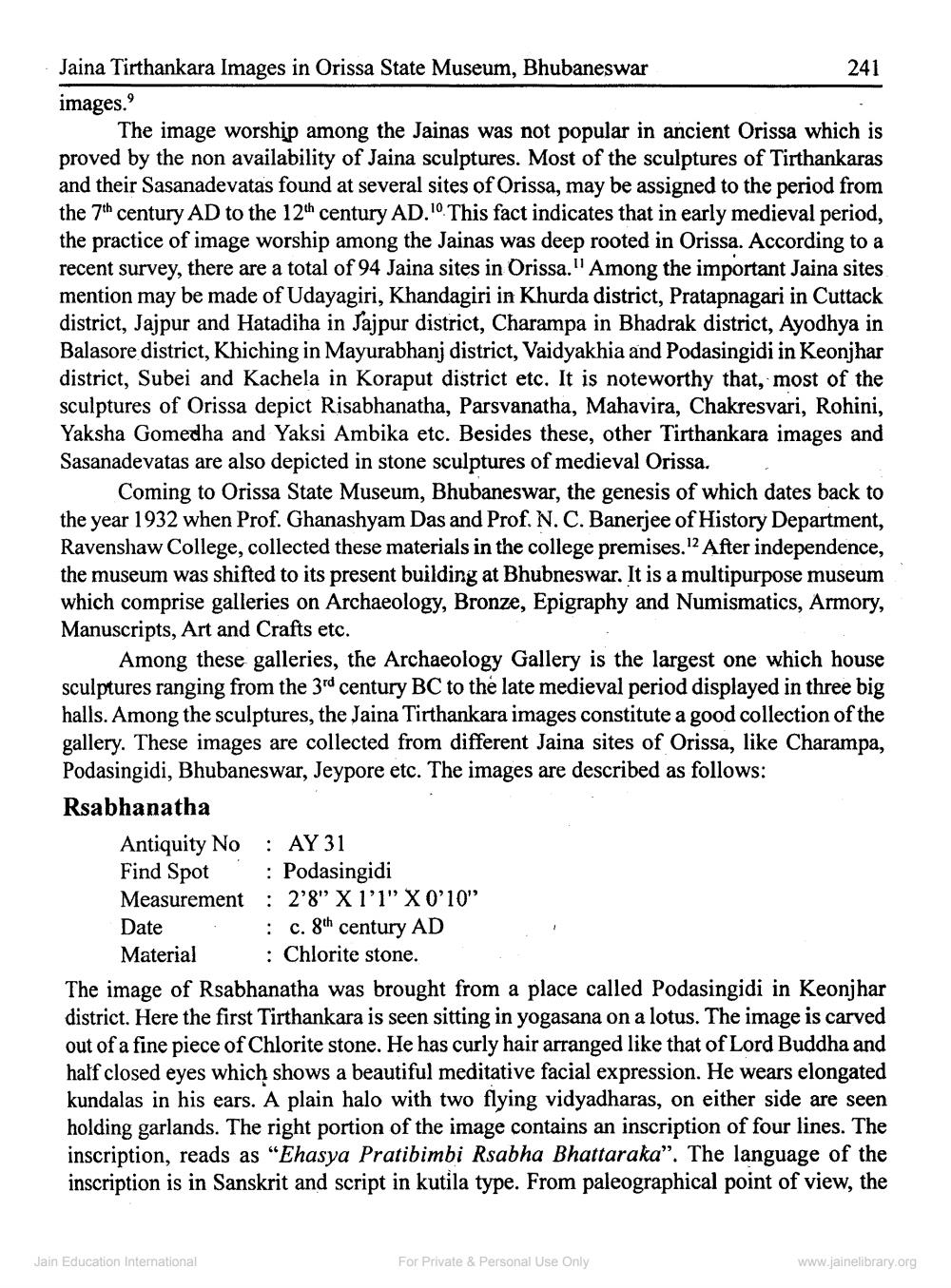________________
Jaina Tirthankara Images in Orissa State Museum, Bhubaneswar
241 images.
The image worship among the Jainas was not popular in ancient Orissa which is proved by the non availability of Jaina sculptures. Most of the sculptures of and their Sasanadevatas found at several sites of Orissa, may be assigned to the period from the 7th century AD to the 12th century AD.10 This fact indicates that in early medieval period, the practice of image worship among the Jainas was deep rooted in Orissa. According to a recent survey, there are a total of 94 Jaina sites in Orissa." Among the important Jaina sites mention may be made of Udayagiri, Khandagiri in Khurda district, Pratapnagari in Cuttack district, Jajpur and Hatadiha in Jajpur district, Charampa in Bhadrak district, Ayodhya in Balasore district, Khiching in Mayurabhanj district, Vaidyakhia and Podasingidi in Keonjhar district, Subei and Kachela in Koraput district etc. It is noteworthy that, most of the sculptures of Orissa depict Risabhanatha, Parsvanatha, Mahavira, Chakresvari, Rohini, Yaksha Gomedha and Yaksi Ambika etc. Besides these, other Tirthankara images and Sasanadevatas are also depicted in stone sculptures of medieval Orissa.
Coming to Orissa State Museum, Bhubaneswar, the genesis of which dates back to the year 1932 when Prof. Ghanashyam Das and Prof. N. C. Banerjee of History Department, Ravenshaw College, collected these materials in the college premises. 12 After independence, the museum was shifted to its present building at Bhubneswar. It is a multipurpose museum which comprise galleries on Archaeology, Bronze, Epigraphy and Numismatics, Armory, Manuscripts, Art and Crafts etc.
Among these galleries, the Archaeology Gallery is the largest one which house sculptures ranging from the 3rd century BC to the late medieval period displayed in three big halls. Among the sculptures, the Jaina Tirthankara images constitute a good collection of the gallery. These images are collected from different Jaina sites of Orissa, like Charampa, Podasingidi, Bhubaneswar, Jeypore etc. The images are described as follows: Rsabhanatha
Antiquity No : AY 31 Find Spot : Podasingidi Measurement: 2'8" X 1'1" X 0'10" Date
: c. 8th century AD Material : Chlorite stone. The image of Rsabhanatha was brought from a place called Podasingidi in Keonjhar district. Here the first Tirthankara is seen sitting in yogasana on a lotus. The image is carved out of a fine piece of Chlorite stone. He has curly hair arranged like that of Lord Buddha and half closed eyes which shows a beautiful meditative facial expression. He wears elongated kundalas in his ears. A plain halo with two flying vidyadharas, on either side are seen holding garlands. The right portion of the image contains an inscription of four lines. The inscription, reads as "Ehasya Pratibimbi Rsabha Bhattaraka". The language of the inscription is in Sanskrit and script in kutila type. From paleographical point of view, the
Jain Education International
For Private & Personal Use Only
www.jainelibrary.org




